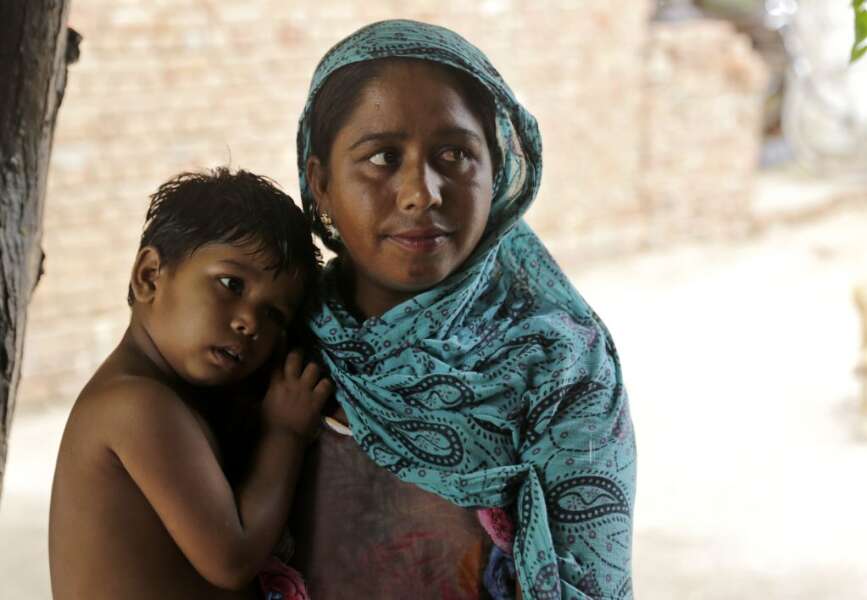A systematic overhaul
Child malnutrition is a chronic problem and a longstanding challenge for the public administration of India; write Subhomay Saha & Rashi Singh

Despite decades of investment to tackle this malaise, India's child malnutrition rates are still one of the most alarming in the world. The Global Hunger Index (2020) — which is calculated on the basis of total undernourishment of the population, child stunting, wasting and child mortality — places India at the 94th spot among 107 countries.
The bane of child and maternal malnutrition is responsible for 15 per cent of India's total disease burden.
The crisis of child malnutrition in India has often been attributed to historical antecedents such as poverty, inequality and food shortage. However, countries with similar historical and societal makeup and comparable per capita income have fared much better.
Existing policies and infrastructure
The Integrated Child Development Services (ICDS) serves as the most critical instrument in addressing India's child malnutrition challenge. It facilitates a supplementary nutrition programme, growth monitoring and promotion, nutrition and health education, immunisation, health check-ups and health referrals, as well as pre-school education.
The primary beneficiaries are children below five years, as well as pregnant and lactating women. It operates through a network of 1,012,374 Anganwadi Centres and is connected to 8.36 crore beneficiaries.
India launched the POSHAN Abhiyaan — a flagship national nutrition mission to improve nutrition among children, pregnant women and lactating mothers in 2017 — to meet the second United Nations-mandated Sustainable Development Goal (SDG): Ending hunger, achieving food security and improved nutrition.
To this end, POSHAN Abhiyaan aims to reduce malnutrition among children by facilitating inter-departmental convergence, real-time monitoring, intensified health and nutrition services for the first 1,000 days and Jan Andolan (community Mobilisation).
Economics of malnutrition
The status of malnutrition and its consequences can be partly attributed to the inadequate political focus on budgetary allocation made to tackle this issue. Research suggests that per USD spent on nutritional interventions in India could generate USD 34.1 to USD 38.6 in public economic returns — three times more than the global average.
Studies reveal that India loses up to 4 per cent of its gross domestic product (GDP) and up to 8 per cent of its productivity due to child malnutrition.
However, the contemporary trends in budgetary allocations to nutrition appear to be counterintuitive. This year, the budget for child malnutrition has been allocated as components under the new Saksham Anganwadi and Mission POSHAN 2.0 schemes.
These schemes have been formulated by merging four existing schemes: The Anganwadi Services, POSHAN Abhiyaan, Scheme for Adolescent girls and National Creche Scheme. The total allocations for the Union budget 2021-22 saw an increase of 14.5 per cent; but the allocation towards child nutrition dropped by 18.5 per cent compared to 2020-21.
Shortcomings in implementation
The shortfall in budgetary allocations cannot alone be blamed for India's child malnutrition crisis. Evidence points to numerous shortcomings in implementation as well. The 2020 Comptroller and Auditor General of India audit of ICDS revealed that out of Rs 1,042 crore allocated, only Rs 908 crore was actually disbursed to state governments. Of the approximately Rs 4,300 crore released under POSHAN Abhiyaan from March 2018 to December 2019, only around Rs 1,570 crore had been spent.
Shortcomings in implementation have also been found in the case of Common Application Software (CAS). It was conceptualised in 2017 to create a system for real-time monitoring of the nutrition of pregnant/lactating women and children, as envisioned in the POSHAN Abhiyaan.
CAS was equipped with a three-year budget of Rs 9,000 crore, half of which was funded by the government and the other half was met with a loan from the World Bank. The intention was to digitise the records pertaining to child health and nutrition, supplementary nutrition for pregnant and lactating mothers.
This would have provided real-time data to officers at the block, district, state and national level, for designing, implementing and rectifying targeted interventions.
To train Anganwadi workers on CAS usage, a massive countrywide phase-wise training programme was envisaged. The last such training and rollout phase was conducted in November 2019, by when only 5,51,270 of the 10,12,374 Anganwadi centres were equipped with CAS.
The CAS portal has been defunct since September 2020. This has severely compromised the administration's ability to track the status of malnourished children who have been pushed further at risk due to the novel coronavirus disease (COVID-19) pandemic.
The way forward
Child malnutrition in India is a complex problem that requires a systemic overhaul of the public administration and service delivery systems, as well as engagement from the community. There is an urgent need to invest in the infrastructure of ICDS and the Anganwadi centres as well as improving their coverage.
Some district-level interventions have aimed to address this issue. There is also a need to address gaps and inefficiencies in the present setup through public awareness, community engagement and empowerment, while such an intervention would assist the community in realising their rights and entitlements, and then act as a deterrent to inefficiencies and gaps, it would also help in developing community-based solutions to malnutrition, unburdening the stressed public healthcare and ICDS infrastructure.
Studies conducted on such community-based solutions in India have found them to be effective in alleviating the conditions of children afflicted by severe acute malnutrition.
It is also important to strengthen inter-departmental convergence and resource allocation based on real-time data. In this regard, the approach undertaken by Bangladesh has been successful and replicable in India.
Improving the infrastructure and reach of Anganwadi Centres and ICDS, developing community-based solutions, facilitating interdepartmental convergence and revamping the now-defunct real-time data monitoring system are some of the tenets in the policy framework of POSHAN Abhiyaan and Mission POSHAN 2.0.
However, much more administrative and political will is needed to bridge what has been achieved and what was envisaged. DTE
Views expressed are personal



